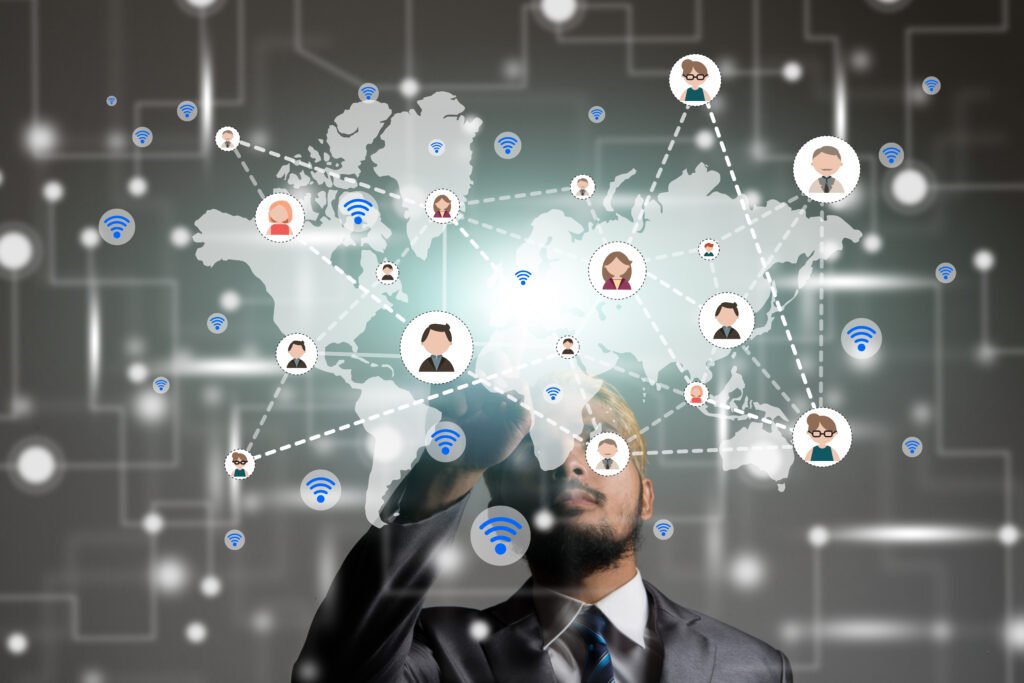
Digital Marketing

Network Marketing (Multi-Level Marketing – MLM)

Experiential & Relationship Marketing

B2B & Niche Marketing

Other Specialized Marketing
Top Marketing Trends in 2025: What’s Changing and How to Stay Ahead:
Introduction: Why Staying Updated in Marketing Matters
Marketing never stands still. Each year brings new technologies, tools, and consumer expectations. In 2025, we’re seeing one of the most significant shifts yet—where artificial intelligence, personalization, and consumer trust are becoming the pillars of successful marketing strategies.
Whether you’re running a local business or working in a global agency, understanding these changes is essential. It’s not just about knowing what’s trending—it’s about adapting your marketing efforts to better connect with your audience, build loyalty, and drive real results.
1. AI-Powered Marketing Has Evolved Beyond Automation
Artificial Intelligence (AI) has moved far beyond just automating repetitive tasks. In 2025, AI is helping marketers create smarter campaigns, predict customer behavior, and deliver content that resonates at the right moment.
Key Developments:
- Generative AI (like ChatGPT and Jasper) is used for writing blog posts, ad copy, social media content, and even product descriptions in seconds.
- AI analytics tools can now interpret massive amounts of data, providing insights on customer journeys, buying habits, and optimal campaign timing.
- AI in design helps generate high-quality visuals instantly, including branded social media posts and website banners.
AI has become a core part of marketing teams, not just an add-on. Brands using AI are seeing faster campaign turnarounds and improved customer satisfaction by delivering more timely and relevant content.
2. Hyper-Personalization is the New Standard
In 2025, consumers don’t just prefer personalization—they expect it. Brands are now going beyond using just first names in emails. They’re creating experiences tailored to individual behaviors, locations, preferences, and purchase history.
How Businesses Are Using It:
- E-commerce sites suggest products based on browsing history and past purchases.
- Streaming platforms create fully customized homepages for each user.
- Email campaigns adapt content depending on how users previously interacted with the brand.
This trend is powered by data, but it’s ultimately about empathy—understanding your audience on a deeper level and offering value that feels made just for them.
3. Short-Form Video Continues to Dominate Digital Content
The explosion of platforms like TikTok, Instagram Reels, and YouTube Shorts has changed how people consume content. Short-form video—under 60 seconds—remains one of the most effective ways to capture attention and encourage engagement.
Why It Works:
- Short videos match the way people scroll and consume content on mobile devices.
- They’re ideal for showcasing product use, behind-the-scenes looks, or quick tips.
- Algorithms on social platforms heavily promote short videos that retain attention.
Brands are using this format for product launches, influencer partnerships, and even customer testimonials. And because short videos are easy to produce and low-cost, businesses of all sizes can compete for attention.4. Conversational Marketing is Transforming Customer Interaction
Marketing is no longer a one-way message—it’s a conversation. With the rise of chatbots, messaging apps, and interactive experiences, customers expect to talk with brands just like they would with friends.
Tools and Tactics Include:
- Chatbots that guide users through a purchase or answer FAQs 24/7.
- Live chat agents who provide real-time support on websites and social media.
- Interactive content like quizzes or polls that allow users to shape their experience.
This approach not only improves the customer journey but also builds trust and transparency. Brands are moving away from the idea of pushing a message and instead are asking, “How can we help?”
5. Voice Search is Reshaping How People Discover Brands
More users are using voice assistants like Siri, Google Assistant, and Alexa to find local businesses, shop online, and look up information. This change in behavior is pushing marketers to think about how people speak, not just how they type.
Impact on Marketing Strategies:
- Businesses are focusing on conversational keywords and question-based phrasing.
- Content like FAQs, how-to guides, and explainer videos are more important than ever.
- Local SEO is being influenced by “near me” and voice-related queries.
This trend is especially crucial for local businesses and service providers who want to be found when someone asks their phone, “Where can I get my car serviced near me?”
6. First-Party Data is Taking Over in a Cookieless World
With third-party cookies being phased out and increasing privacy regulations like GDPR and CCPA, brands are now focusing on collecting first-party data directly from their customers.
How Brands Are Adapting:
- Encouraging newsletter signups through exclusive content or discounts
- Using customer accounts and loyalty programs to collect behavioral data
- Building trust by clearly explaining how data will be used
This shift is making marketing more transparent and sustainable. While it may be more effort to build data relationships directly, it creates stronger bonds with customers and long-term value.
7. Sustainability and Ethical Branding Are Influencing Buyer Choices
Consumers today are more socially and environmentally conscious. Brands that reflect these values are gaining more attention—and more loyalty.
What Customers Are Looking For:
- Transparency about sourcing and manufacturing
- Commitment to diversity, equity, and inclusion
- Genuine corporate social responsibility (CSR) efforts
Marketing in 2025 isn’t just about promoting a product. It’s about promoting values. Companies that are authentic about their mission are winning over audiences who care just as much about purpose as price.
Conclusion: The Future of Marketing Is Personal, Ethical, and Tech-Savvy
Marketing in 2025 is defined by innovation, empathy, and responsibility. While technology like AI and automation is revolutionizing how campaigns are built, the human side of marketing—understanding customers’ needs, values, and expectations—is more important than ever.
To stay competitive, marketers must blend these tools with a strong understanding of audience behavior. That means creating personalized experiences, being transparent about data, and building relationships instead of just transactions.
In the end, successful marketing today isn’t about shouting the loudest—it’s about speaking directly, authentically, and intelligently to the right people at the right time.

